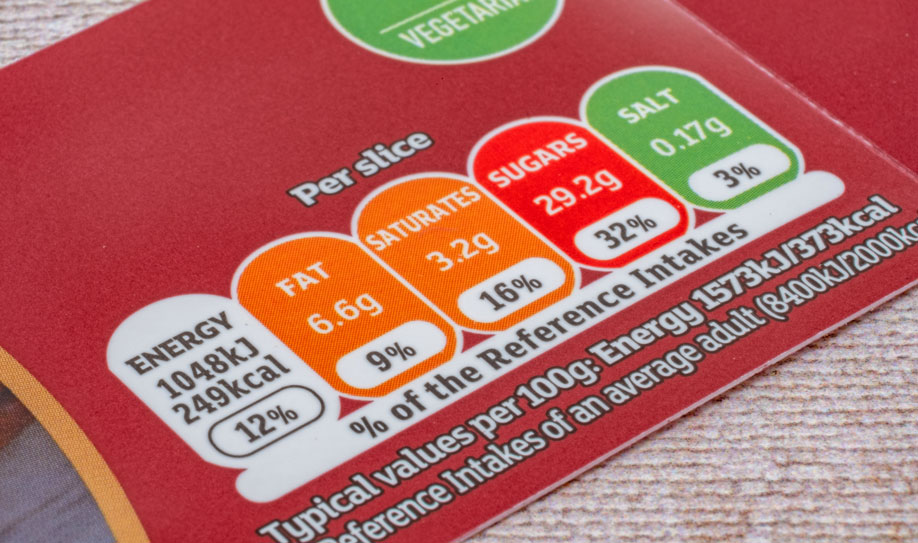Getting to grips with food labels means you can start making healthier choices.
What are food labels?
Food labels provide information about the content of foods and help us to make healthier choices when buying food. At a glance, traffic light labels show whether it’s OK to eat the food frequently (green), quite often (amber) or as an occasional treat (red).
How do you read food labels?
 Traffic light labels show the amount of fat, saturated fat, sugar and salt in food, colour-coded according to whether there is a high (red), medium (amber) or low (green) amount.
Traffic light labels show the amount of fat, saturated fat, sugar and salt in food, colour-coded according to whether there is a high (red), medium (amber) or low (green) amount.
What about the ingredients?
If there is a list of ingredients, these are listed by weight, from highest to lowest. So if the first few ingredients in the list are sugar or high-fat ingredients such as butter and cream, this means the food is likely to be an unhealthy choice.
What are labels based on?
Food labels are based on “reference intakes” for the amount of nutrients and energy needed each day for an average-sized woman doing an average amount of physical activity. It’s therefore not a target, as the required amount of food and drink varies from person to person, depending on your size, age and lifestyle. People who want to lose weight may need to eat and drink a lot less than the reference intake, or do more physical activity.
For more information on reading food labels, take a look at our food labelling guide.

